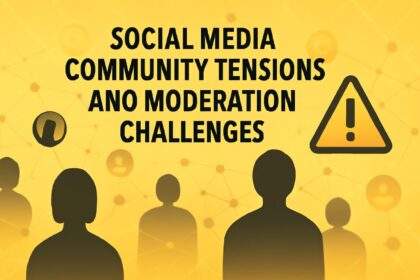Salesforce Unveils Agentforce 360 Amid Rising Enterprise AI Competition
Salesforce announced the launch of Agentforce 360, the latest iteration of its AI agent platform, positioning itself aggressively in the crowded enterprise AI market. The announcement precedes the company’s flagship Dreamforce conference, set to begin October 14, 2025. Agentforce 360 introduces significant advancements, including new AI prompting capabilities, an integrated agent development environment, and deeper integration with Slack, Salesforce’s widely used business communication tool.
Agent Script: Enhancing AI Agent Flexibility
A centerpiece of Agentforce 360 is the upcoming beta launch of Agent Script in November. This AI prompting tool enables users to program AI agents with conditional “if/then” logic, allowing for more adaptive and predictable responses in complex customer interactions. Unlike traditional pattern-based AI responses, Agent Script supports “reasoning” models powered by Anthropic, OpenAI, and Google Gemini. These models are designed to simulate thoughtful responses, improving the quality and relevance of AI-driven customer support.
Agentforce Builder: Streamlining AI Agent Development
In parallel, Salesforce is introducing Agentforce Builder, a unified platform for building, testing, and deploying AI agents. Scheduled for beta release in November, the tool integrates Agentforce Vibes, an enterprise-grade app coding environment recently announced by Salesforce. This consolidated development environment aims to simplify AI agent lifecycle management, enabling businesses to customize AI solutions efficiently within a single interface.
Expanding Slack Integration and AI Capabilities
Salesforce is deepening the integration between Agentforce and Slack, with core applications such as Sales, IT, and HR modules becoming accessible directly within Slack starting October 2025 and extending into early 2026. Slack is piloting a new AI-enhanced Slackbot designed as a personalized assistant that learns user preferences to provide tailored insights and recommendations. Looking ahead, Salesforce plans to transform Slack into a comprehensive enterprise search tool by introducing connectors for Gmail, Outlook, and Dropbox in early 2026.
Enterprise AI Market Dynamics and Competitive Landscape
Salesforce’s Agentforce 360 launch comes amid vigorous competition in enterprise AI solutions. Recent announcements from Google and Anthropic underscore the race to capture enterprise clients with advanced AI agent offerings. Google’s Gemini Enterprise suite, targeting enterprise-grade AI agent development, counts prominent customers like Figma and Klarna. Meanwhile, Anthropic’s Claude Enterprise has secured a major deal with Deloitte to deploy AI chatbots across 500,000 employees, alongside a strategic partnership with IBM. Despite these advancements, a recent MIT study highlights a sobering reality: 95% of enterprise AI pilots fail to reach production, reflecting ongoing challenges in demonstrating clear ROI from AI investments.
Salesforce’s Market Position and Early Adoption
Salesforce reports that Agentforce serves 12,000 customers, a figure that significantly outpaces many competitors. Early adopters of Agentforce 360’s new features include major enterprises such as Lennar, Adecco, and Pearson.
FinOracleAI — Market View
Salesforce’s Agentforce 360 rollout represents a strategic effort to solidify its leadership in enterprise AI by enhancing agent flexibility, development efficiency, and integration across key workplace platforms like Slack.
- Opportunities: Enhanced AI prompting and reasoning models could improve customer engagement and operational efficiency.
- Risks: Persistent challenges in AI pilot-to-production conversion may limit near-term ROI and adoption rates.
- Slack’s evolving role as an AI-powered enterprise hub could strengthen Salesforce’s ecosystem lock-in.
- Competition from Google and Anthropic remains intense, requiring continuous innovation.
Impact: Salesforce’s expanded AI platform capabilities are likely to reinforce its market leadership, though widespread enterprise adoption hinges on overcoming ROI and implementation challenges prevalent in the sector.













